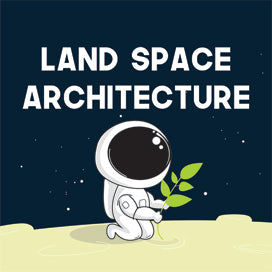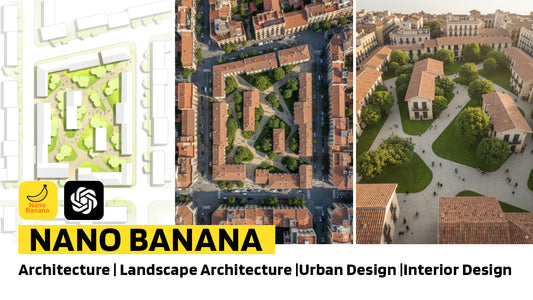Landscape Architecture vs. Landscape Design
Differences between landscape architecture and landscape design
In the world of outdoor spaces, the terms “landscape architecture” and “landscape design” are often used interchangeably, leading to confusion. However, a closer look reveals distinct roles and purposes for each discipline. This article aims to unravel the differences between landscape architecture and landscape design, shedding light on their unique contributions to the creation of aesthetically pleasing and functional outdoor environments.
I. Scope and Scale:
a. Landscape Architecture:
– Encompasses large-scale projects such as public parks, urban planning, and environmental restoration. – Focuses on the integration of natural and built environments, considering sustainability and ecological systems.
b. Landscape Design:
– Primarily concerned with smaller-scale projects, including residential gardens, private estates, and commercial spaces. – Emphasizes the aesthetic and functional aspects of outdoor spaces, often with a focus on plants, hardscapes, and spatial organization.
II. Education and Training:
a. Landscape Architecture:
– Requires a professional degree in landscape architecture, typically a bachelor’s or master’s degree. – In-depth coursework covers a range of topics, including site planning, environmental science, and design theory.
b. Landscape Design:
– Education paths vary, with some professionals having formal training in landscape design, while others may enter the field through experience or related disciplines. – Training often focuses on plant selection, design principles, and practical horticulture skills.
III. Design Approach:
a. Landscape Architecture:
– Emphasizes a holistic approach, considering the broader context of the site, environmental impact, and long-term sustainability. – Incorporates elements of art, science, and functionality to create spaces that enhance the overall well-being of communities.
b. Landscape Design:
– Tends to have a more client-centric approach, focusing on fulfilling the specific desires and needs of the client. – Primarily concerned with the visual and experiential aspects of the space, including aesthetics, color schemes, and user experience.
IV. Licensing and Professional Responsibilities:
a. Landscape Architecture: – Typically requires licensure to practice, ensuring that professionals meet established standards and have a comprehensive understanding of the field. – Involves a broader range of responsibilities, including project management, environmental impact assessment, and public safety considerations.
b. Landscape Design: – Licensing requirements vary by location, and some jurisdictions do not mandate licensure for landscape designers. – Focuses on the artistic and functional aspects of design without the extensive regulatory responsibilities associated with landscape architecture.
While both landscape architecture and landscape design contribute to the creation of stunning outdoor spaces, their distinctions lie in the scale, scope, education, and professional responsibilities. Understanding these differences is crucial for clients seeking the expertise of professionals to bring their outdoor visions to life. Whether it’s a sprawling public park envisioned by a landscape architect or a meticulously designed residential garden by a landscape designer, each discipline plays a vital role in shaping the world around us.

Choosing the Right Path: Landscape Architecture vs. Landscape Design for Your Bachelor’s Degree
Embarking on the journey towards a Bachelor’s degree in the field of outdoor spaces requires careful consideration of your interests, career goals, and the unique aspects of each discipline. This guide aims to provide insights into the decision-making process between studying landscape architecture and landscape design, offering valuable considerations to help you make an informed choice.
I. Self-Reflection:
a. Passion and Interests:
– Consider your passion for both the artistic and scientific aspects of outdoor spaces. If you are drawn to large-scale projects, ecological sustainability, and community planning, landscape architecture might be the ideal fit. If your interest lies in creating visually appealing and functional smaller-scale environments, landscape design could be the path for you.
b. Career Goals:
– Reflect on your long-term career aspirations. Landscape architects often engage in urban planning, environmental restoration, and public projects, while landscape designers typically focus on residential gardens, commercial spaces, and smaller-scale designs.
II. Educational Requirements:
a. Academic Rigor:
– Evaluate your academic preferences and capabilities. Landscape architecture programs often require a rigorous academic commitment with a focus on environmental science, site planning, and architectural principles. Landscape design programs may offer a more artistic and horticulturally focused curriculum.
b. Duration and Degree Offerings:
– Consider the duration of the programs. Landscape architecture programs often span five years for a Bachelor’s degree, while landscape design programs may be completed in a shorter timeframe. Additionally, some institutions may offer combined programs that integrate elements of both disciplines.
Landscape architecture students works
III. Professional Licensing and Responsibilities:
a. Regulatory Requirements:
– Research the professional licensing requirements in your desired location. Landscape architects typically require licensure to practice, while landscape designers may have varying regulatory considerations.
b. Responsibilities in Practice:
– Understand the scope of professional responsibilities associated with each discipline. Landscape architects often engage in comprehensive project management, environmental impact assessment, and public safety considerations, whereas landscape designers focus more on the aesthetic and functional aspects of design.
IV. Career Opportunities and Outlook:
a. Diverse Opportunities: – Explore the range of career opportunities available in each field. Landscape architects may find roles in government agencies, private firms, or as independent consultants. Landscape designers often work in private practice or collaborate with architects and builders.
b. Industry Trends: – Stay informed about industry trends and advancements. The landscape architecture and design fields are dynamic, and understanding current trends can help align your studies with emerging opportunities.
Deciding between studying landscape architecture or landscape design for your Bachelor’s degree is a significant choice that requires thoughtful consideration of your interests, academic preferences, and career goals. By carefully evaluating these aspects, you can make an informed decision that sets the foundation for a fulfilling and successful career in shaping the outdoor environments of tomorrow.



